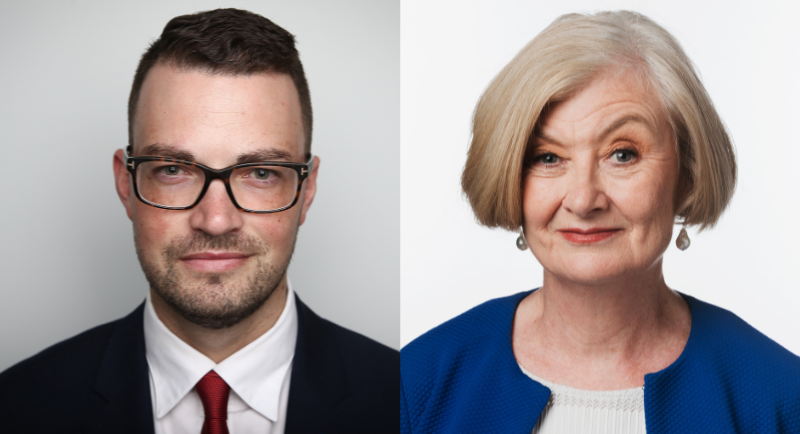The Sydney Morning Herald/The Age investigation into Merivale this week reported allegations relating to some unsavoury business practices.
The reporting is the latest in a long line of investigations this year at the Nine Publishing division that has had an impact – both on people and businesses exposed and the Nine business model.
Mediaweek spent time with The Sydney Morning Herald editor Bevan Shields and multi-award-winning journalist Kate McClymont to learn more about their investigative work.
Bevan Shields: It’s been a pretty big year. We had the Alan Jones investigation nearly this time a year ago. We’ve also had the Building Bad investigation that’s been a co-pro between our colleagues at The Age, our Sydney reporters and The AFR.
We’ve had Swillhouse, which was a huge story for Sydney and for the Herald. We’ve been kicking on with our deep dive into forever chemicals, which really gained a lot of steam this year. More recently we’ve had the Richard White and WiseTech story in the last couple of weeks, and now Merivale.
I’m thrilled for the team and proud of the work they’re doing. About this time last year, I looked at the size of the team, how many people we had in it. It was very clear that investigative reporting has to be a crucial offering for our subscribers.
We reallocated some people, which more than doubled the size of the team, That was really helpful because, as Kate will tell you, there’s almost too much to do. We needed more people, we found the right people.
The full-time reporters in our investigations unit are:
The Sydney Morning Herald: Kate McClymont, Carrie Fellner, Eryk Bagshaw, Patrick Begley, Chris Barrett, Ben Cubby, Harriet Alexander and Lucy Macken.
The people on The Age’s investigative team are Nick McKenzie, Michael Bachelard, Aisha Dow, Charlotte Grieve and Clay Lucas.
Outside of the ABC, we have the largest investigative reporting team in the country, certainly the largest for a publishing business.
It’s risky, it’s hard yakka for the journalists who invest themselves in it, often for a long time. It can be gruelling on the people who we ask to place their trust in us to tell their story, and if people decide to be silly and sue, it can be an expensive business as well for us.
The investigations are really critical for subscribers. We’ve got a subscriber business model that we’re really focused on at the moment, and people will only pay if they see depth and quality. And if they see something they can’t get anywhere else. Investigative journalism really ticks all those boxes.
It brings in new readers to our site and makes sure the existing ones are engaged and feel like they’re getting bang for their buck.
A team within Nine did some research earlier this year and found people very strongly identify The Herald and The Age with investigative reporting.
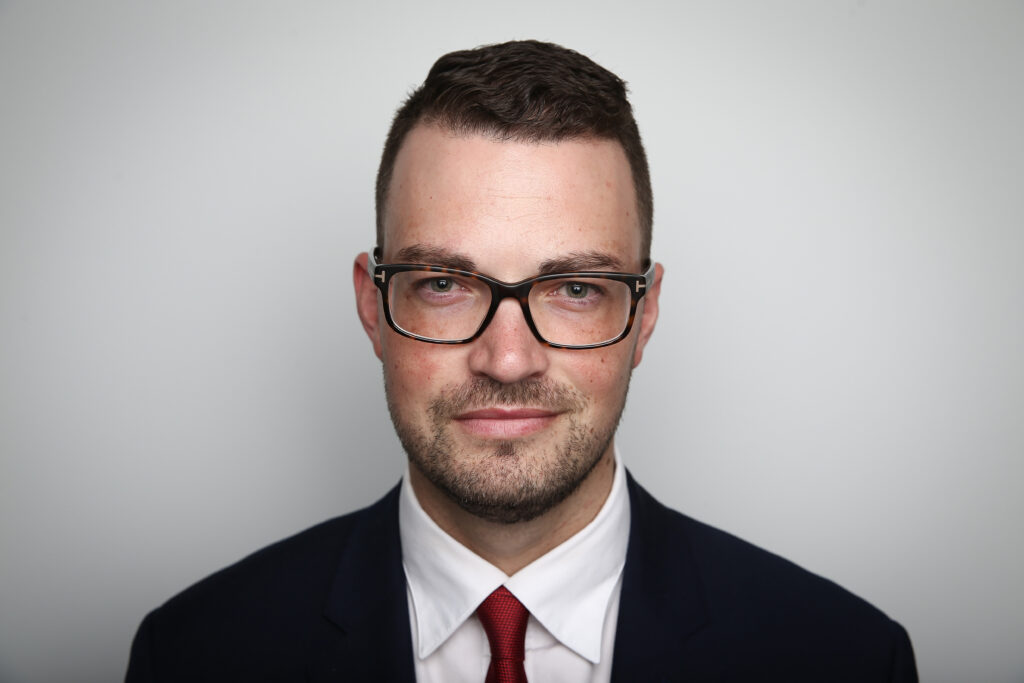
Bevan Shields
How long can an investigation take?
Kate McClymont: It does vary quite a bit, With the Alan Jones story, I had been working on that for literally years.
You can get to a point, maybe hit a wall, and then something else will come to you down the track. A lot of the time it’s perseverance. I look back on Eddie Obeid, I was writing about him for almost 20 years before he finally went to jail.
With the Richard White story, Nick McKenzie and I had mentioned ages ago that we both had information. But it was only Linda Rogan filing her affidavit and taking action in the Federal Court that gave us the impetus to combine our resources and get on top of the story.
You never quite know where you’re going to end up with whatever you’re looking at. You can do a story, like Eryk Bagshaw’s Swillhouse, and it’s only after it’s published that others are prompted to come forward. Investigative journalism can be a long process.
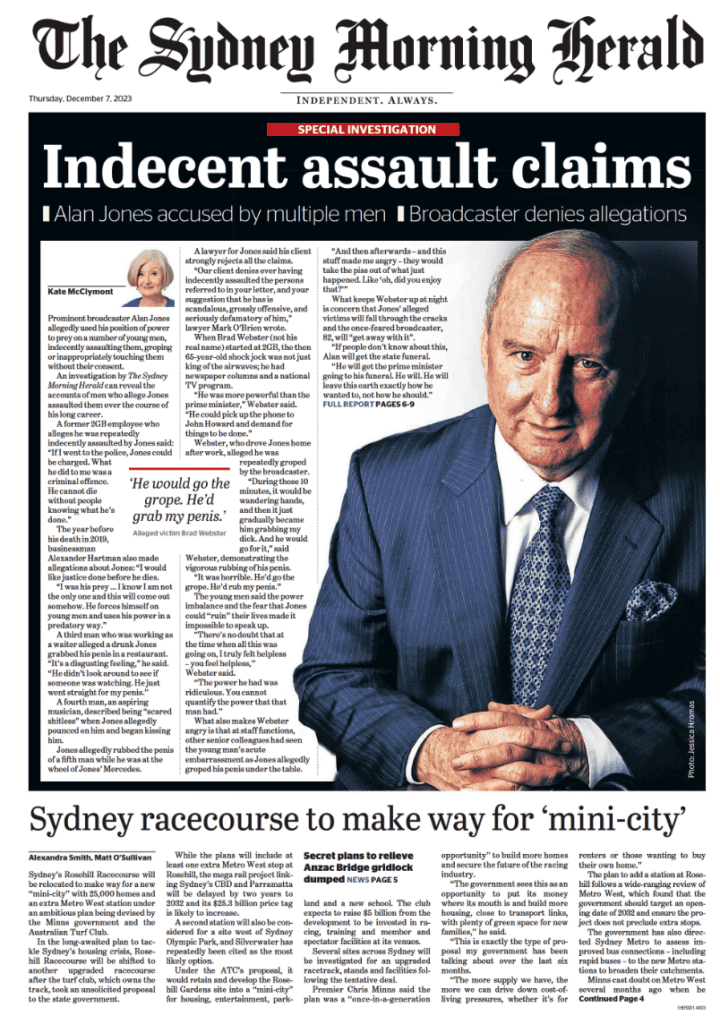
Bevan Shields: There are some stories that pop up where an investigative reporter can apply their skills to research and write then publish within a week or two.
I’m a naturally impatient person and it can be frustrating sometimes when you’re waiting for something that might take six months.
If the team was only producing a story every six months, it would be good journalism, but there’s also just a beast to feed as well [for readers].
It’s a real skill, that not all reporters have, to be able to work on something in the background, keep it ticking along, and keep at it, while you’re also producing stories at a more regular pace.
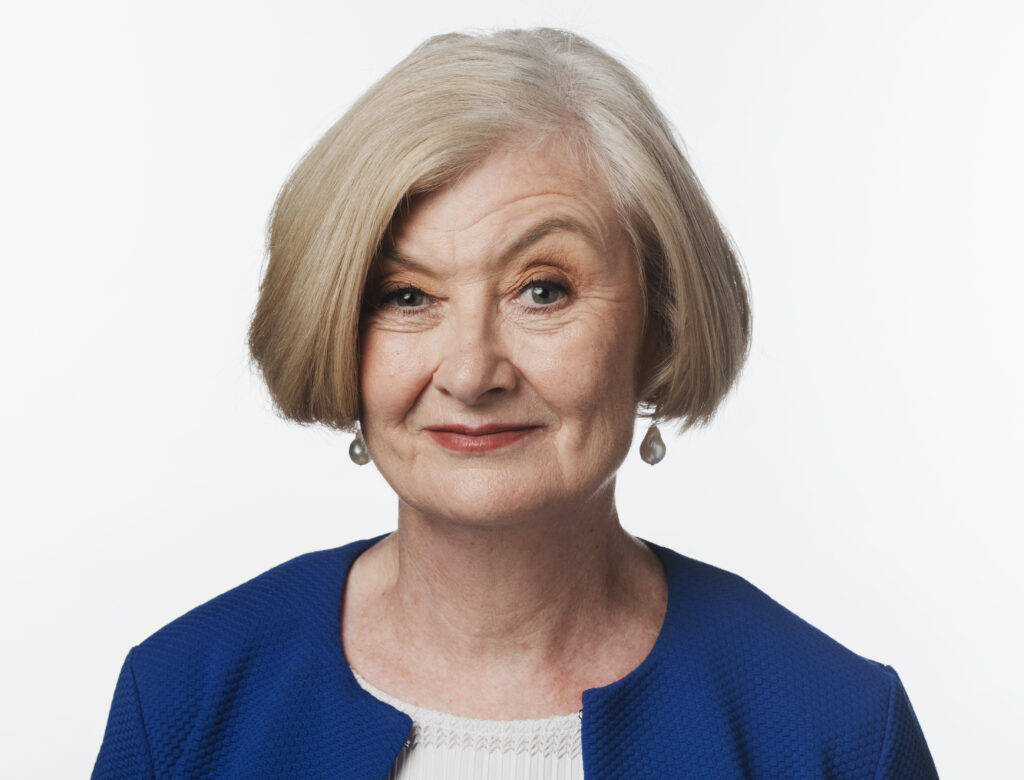
Kate McClymont
Can the lawyers slow you down?
Kate McClymont: We are generally on the same page in that we have the same goal in mind. It often feels unnecessary to add in a couple of legal words. But it’s always wise to listen. With every story that I do, I always think if I get sued, who is going to go to court, who’s going to be in the witness box, will they be good?
Some stories can’t get published, because you know if that person sues, you don’t have a single person who’s going to step forward.
Especially with serious allegations like indecent assault and things like that, it’s why you look for a pattern of behaviour in an investigation. That’s what you’re looking for…something other than a one-off event, because that then boosts your story. If you can say something happened to seven people who don’t know each other, and even if none of those will go on the record, there is a pattern of behaviour that is compelling in itself.
Bevan Shields: There may be differences of agreement along the way, we might have a tussle over how something is phrased, or a particular source we want that lawyers may feel uncomfortable with.
We share the same goal, which is public interest journalism, and that’s very clear to me in all my dealings with the lawyers, that they share the exact same goal, they’re not there to block at all.
They understand we need to take risks, and look, that also extends beyond investigative journalism. One of the benefits of us spending less time in court on defamation matters over the last year or two, is that our lawyers have time to go to court now to argue against ridiculous suppression orders.
The lawyers are definitely of the same mindset of us, that there’s information that people don’t want out there, that we all want to get out there for the public interest.
Kate McClymont: Talking to people from some of the other news outlets, they say that some of their stories cannot get over the line, because there is very little appetite for legal risk. We are slightly different, in that we’re prepared to take the risk. Smaller companies just cannot afford, or are unwilling to do that, because of potential legal actions and costs down the track.
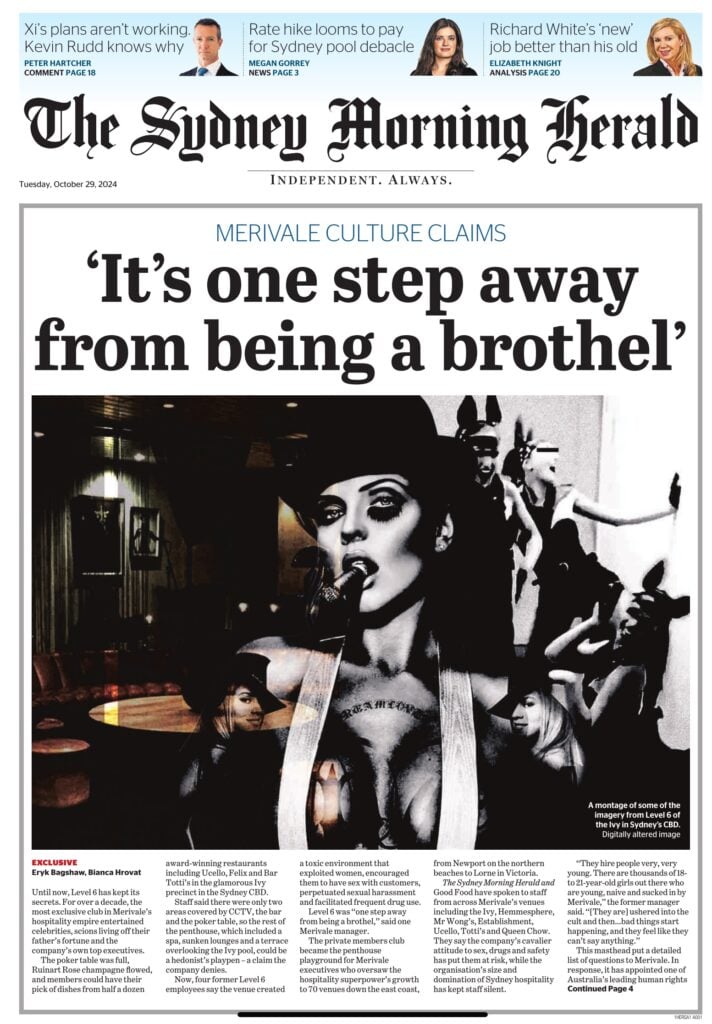
Not every story gets published
Kate McClymont: There’s always hope. You always keep the files open. One thing I find absolutely amazing is that a person in one of my stories will later pop up in another one of my stories.
For instance, Eddie Obeid’s lawyer, Sevag Chalabian, who helped hide the $30 million of corrupt payments that he got out of a mine deal brokered by Ian MacDonald. How amazing is it that down the track, up pops Sevag Chalabian laundering blackmail money in the Adam Cranston tax fraud case. I always love it when there’s repeat offenders popping up.
People react differently to accusations
Kate McClymont: A lot of the people that I write about, I’m actually writing about them because they’re narcissistic sociopaths. They are the people who are least likely to ever say, ‘Fair cop, gov. Yes, I did it.’
It’s always the newspaper’s fault, the journalist’s fault. Other people, such as politicians, are much more adept at saying, ‘Right, okay, I can see how this is going to play out. I’m going to get ahead of it.’
Especially people with PR teams, who get in place, trying to ward off bad publicity.
Bevan Shields: What we have really tried to do is bring the rest of the newsroom around some of these bigger investigations when they do land to try and make sure that we amplify it as much as possible.
We follow up on that reporting, and we push our other contacts and sources, and we ask politicians what their views are on something and what they’re going to do about it. PFAS, or Forever Chemicals, is a good example of that. Carrie Fellner was really a one-woman machine working on that for a long time, and we’ve tried to broaden that out where our Canberra bureau is pushing federal politicians on that a lot more.
We’ve had other people in the environment team weigh in on that story, and I think that pressure and thinking about what you do the day a story lands, what’s next, helps generate some momentum.
Selling the story, testing headlines
[Nine Publishing had a couple of big stories running this week. ‘Sex, sleaze, and hospitality’ was a catchy line accompanying the Merrivale story. Another unconnected item screamed: ‘Gagged with a sex toy’.]
Bevan Shields: It’s a balancing act. There’s not a lot of point in doing amazing work and putting the world’s most boring headline on it where no one will read it. Equally, the headline has to match the story. That’s where a lot of media went wrong, particularly last decade, where you’d have a sensationalist headline that really didn’t match the story when you click, and then you end up disappointed.
I don’t mind a sexy amped-up headline provided when you read, the experience of reading and the content in that story matches.
Swillhouse is a good example of that. The headlines well and truly matched the content. The art of selling a story is something we put a lot more time and thought and resources into.
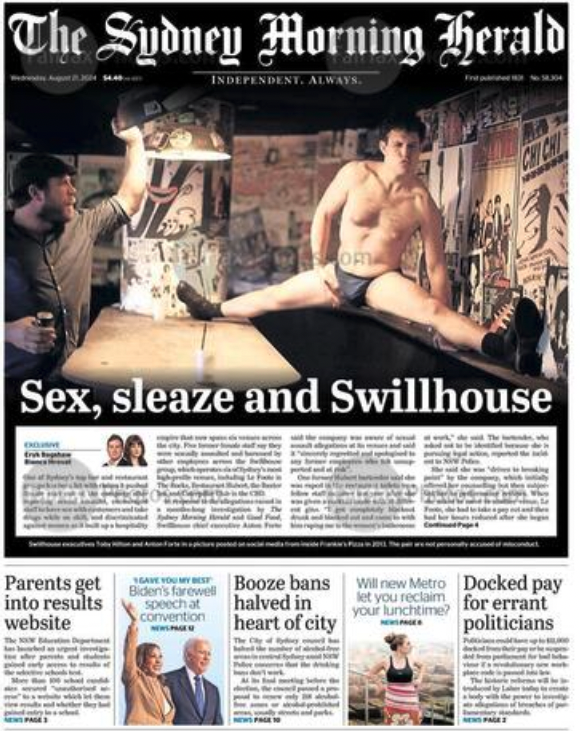
We have conversations about it, often days in advance of publication. We can do Sydney Morning Herald headline testing on homepages now where we might have two different headline options, and one headline will go to a small group of readers and another will go to another group.
We can test what the responses are and see how people respond to that headline and which one may be best. It’s always a balancing act, and despite all those sort of fun, shiny tools that we can use, you also need to rely on journalistic instinct to make sure you’re not pushing things too far.
What’s next in the investigation pipeline?
Bevan Shields: We’ve got a good slate of things coming up over the next few weeks and months in The Sydney Morning Herald. On Merivale and the hospitality industry, we believe there’s a lot more there to look at, and we’re definitely on that. We have encouraged people in our stories over the last couple of days to get in touch with us if they have an experience they wish to share.
See also: The Sydney Morning Herald editor Bevan Shields reaches out to subscribers
